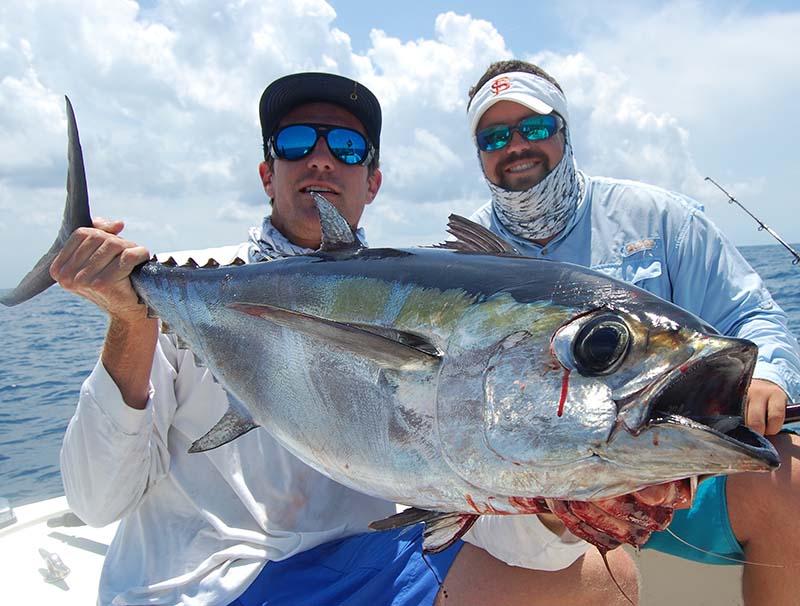
By: Chase Cornell
Kite fishing is widely recognized in South Florida and the Florida Keys as the most effective and efficient way to target sailfish. Although the Gulf Stream current does not cut as close to shore on the Treasure Coast, kite fishing is still extremely effective.
A day of kite fishing on the Treasure Coast should start at local artificial reefs and buoys. Use sabiki rigs to catch blue runners, goggle eyes, greenies and sardines, all favorite offerings of sailfish. Have several spots to catch bait for kite fishing. Having a variety of live bait will improve your fishing experience.
In order to fly a kite you will need either a conventional reel, such as a Penn Senator, or power assist electric reel, like the Diawa Tancom Bull. Pair the reel to a short, slick butt kite rod and 65-to-80-pound braided line. To rig the kite rod, you will need a Tigress Trading Kite Release Kit, which includes 3 release clips, 2 wind-on swivels, 1 small barrel swivel and 1 large barrel swivel. The swivels are spaced out sequentially (approximately 60 feet apart) on the line with the smallest swivel closest to the tag end where a snap swivel is tied on and the kite is attached.
Once the kite is attached, make sure that the kite bridle is tangle free. The kite bridle is adjustable and changes the amount of wind the kite catches, in turn impacting the height at which the kite flies. Take time to learn your kite bridle and how it flies best in particular winds. Keeping the kite in the air and not in the water is the most important part of the entire operation.
Rigging your fishing rods up with kite leaders should consist of a small solid ring, orange float, 1/4-to-1/2-ounce egg weight and bead above a snap swivel. Below the snap is 15-feet of 60-pound mono leader, a 6-inch to 12-inch trace of #4-to-#6 wire attached with an improved albreit knot and a 5/0-8/0 inline tournament circle hook.
Start by letting your kite out to the first clip. Make sure the tension on the clip is set, clip the solid ring into the clip and make sure the reel is in free spool with the clicker on. Let the kite out to the second clip before securing a bait to your hook. Hook the bait through the top of the back, toss it in the water and reel up the slack. Repeat this process until you have three baits out.
Prime areas to kite fish include areas with rips, current changes, weed lines or areas with defined bottom structure. Start out by flying one kite with one bait. As your confidence in the process improves, add in additional baits and kites. Remember, you can also fish flat line baits and bottom baits on the other side of the boat. Kite fishing will allow you to catch more fish and burn less gas and that is something everyone can appreciate!
Chase lives in Vero Beach and loves to fish and write about his adventures. Read more of his fishing escapades at bitepress.wordpress.com.




